This article investigates whether an algorithm can provide an undiscovered physical phenomenon by detecting patterns in the region where the data collected. The pattern recognition is considered with the basis of inferential statistics, which differs from descriptive statistics, as McAllister implied. I assert that physical patterns should be correlated with mathematical expressions, which are interconnected with the physical (quantitative) laws. The known unknows, e.g. gravitons, and the unknown unknowns, e.g. fifth force of the universe, are examined in the sense of learning capabilities of an algorithm based on empirical data. I claim there is no obstacle preventing algorithms from discovering new phenomena.
Tag: Mathematics
Models and Representation
Models and Representation, I. G. Hughes
- the most important distinction:
“The requirement of empirical adequacy is thus the requirement that interpretation is the inverse of denotation.” pg. 333.
Overall, I’m impressed by this simple sentence because I can correlate this with the constructive empiricism of Van Fraassen, asserting the acceptance of a theory with the belief that it is empirically adequate. In my view, interpretation (in the sense of this reading) is mapping of a broader theory, which is postulated in the earlier stages of research by denotations. Demonstration step is related to the mathematical or material model, providing empirical adequacy as a bridge between denotation and interpretation.
- a clarification question/criticism:
“Galileo’s strategy is to take a problem in physics and represent it geometrically. The solution to the problem is then read off from the geometrical representation. In brief, he reaches his answer by changing the question; a problem in kinematics becomes a problem in geometry. This simple example suggests a very general account of theoretical representation. I call it the DDI account.” pg. 327.
I don’t think this example is a good start point to introduce a new account because it’s focusing on representation/denotation step mostly. For demonstration, he would mention the mathematical expression of this motion (x=1/2*a*t^2) or would show a result of an experiment (e.g. a car is moving from the city A to the city B).
Models and Fiction, Roman Frigg
- the most important distinction:
“What is missing in the structuralist conception is an analysis of the physical character of model systems. (…) If the Newtonian model system of sun and earth were real, it would consist of two spherical bodies with mass and other concrete properties such as hardness and color, properties that structures do not have; (…) “ pg.253.
I appreciate his distinction for the model systems to be real or hypothetical entities. It sounds a bit cheesy that the Newtonian model system should consist of real spherical bodies with hardness and color (?!). If the model system is designed to show the gravitational force between two celestial objects, then why do we care about their hardness or color? The model describes the force, not the solid objects.
- a clarification question/criticism:
“Hence, the essential difference between a fictional and non-fictional text lies in what we are supposed to do with it: a text of fiction invites us to imagine certain things while a report of fact leads us to believe what it says.” pg. 260.
So, what if we read a text from an unknown author on the weather predictions for the next 20 years? Let’s say he/she writes about the expected climate changes in South Bend area, and saying, ‘the Lake Michigan will evaporate quickly and will trigger tornados almost every week during spring and summer.’ How can you decide if this is a part of a horror novel or scientific fact? I think there should be more distinctive features in scientific texts, such as reliability, testability, fallibility, the power of its predictions, applicability etc. (Thanks Sir Karl, again!)
Math Cheat Sheet :)
It is always good to have such one throughout the university. This is for AME 60611 Math course. Although I have a terrible handwriting, still it is the best way to remember.
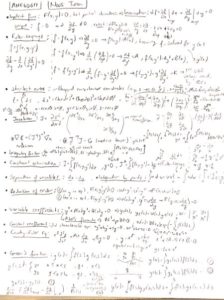
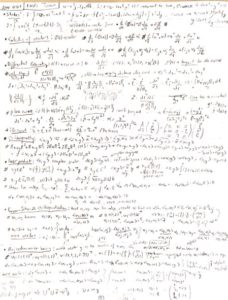
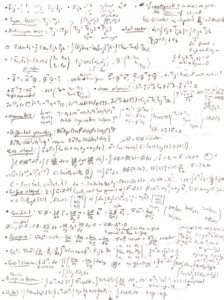
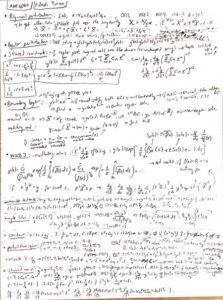
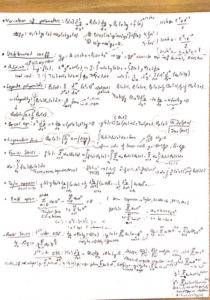
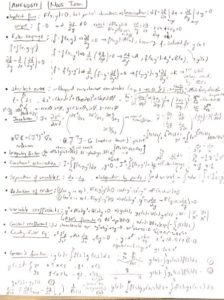

Recent Comments